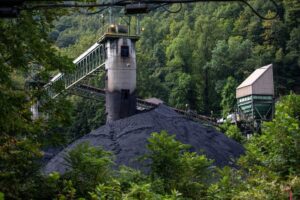From time to time, Liberty Nation publishes articles written by our readers.
If you would like to submit an article for consideration, visit our submissions page.
Appalachia is one of the most beautiful regions in the United States. It’s also one of the most biodiverse places in the temperate world, but the Appalachian ecosystem is sensitive. The loss of one species could hurt all others. That’s also true of the region’s economy. Most residents have never worked as coal miners, but the loss of mining meant the loss of one of the highest paying jobs available to the average person in the area. That destroyed businesses across the region and caused millions of jobs to evaporate.
But much like the Great Depression, this, too, could be followed by an atomic age. Old coal plants dot Appalachia; there’s at least one in almost every county. According to a report from the Department of Energy, about 80% of these could be converted to small nuclear power plants that generate less than a gigawatt each. They have the same boilers, same turbines, and same overall infrastructure.
An Atomic Renaissance at Discount Prices
Using the existing infrastructure of a coal plant could cut costs by 15% to 35%. A typical one-gigawatt plant costs $4 billion. As these would be smaller, we can estimate they’d cost $2 billion to $3 billion. The existing infrastructure should reduce this cost significantly, saving $300 million on the low end to $1 billion on the high end.
It’s all well and good that converting coal plants would save money for companies (and the government), but what about the workers? Well, contrary to what some may believe, nuclear plants and coal plants have the same kind of workers. In an article for the Cardinal News, Christine King, a director at the Idaho National Laboratory, said that about 90% of jobs in coal and nuclear plants overlap. While nuclear plants need nuclear engineers, they’re a small percentage of the labor force. Plants still need electrical engineers, mechanics, welders, inspectors, etc. Around 80% of workers in both coal and nuclear plants range from high school graduates to bachelor’s degree holders. It’s not another world; nuclear plants and coal plants are run almost identically.
The DOE estimates that a large converted plant would create up to 650 permanent jobs, which come with higher pay. The average wage in a coal plant is $28.69 an hour compared to $39.19 for nuclear. That’s about a 37% increase. Economic activity in the local community would increase by $275 million per plant, according to the Department.
Appalachia and Beyond

(Photo by Robert Nickelsberg/Getty Images)
To see how that would affect a community, let’s use an example: Lynch, Kentucky. The coal industry built Lynch, which was once home to the largest coal camp in the world. It used to be a big city of 10,000 people but has dwindled to about 660. There’s an old closed coal plant, along with a tipple and a mine called Portal 31. If the plant were converted to nuclear and reopened, it could revitalize the community.
As Lynch doesn’t have much available housing, the new workers would have to commute, at least in the beginning. There would be a need for housing, and the free market would respond appropriately. There aren’t a lot of businesses currently in Lynch, so the workers would also need to travel to buy things. Again, there would be a need for growth, and the free market would respond. New businesses would pop up in the area. Tax revenue for the city would skyrocket with all the new taxpayers and businesses. This could go to new and improved roads, a library, a school, etc. In a few short years, Lynch might go from poverty to wealth all over again.
For the country as a whole, the effects of a mass conversion of retired coal plants would be immense. The jobs created would encourage less welfare, leading to less government spending. Harlan County, which includes Lynch, is the fifth most dependent county in America. Government benefits, from SNAP (food stamps) to Medicaid and Social Security, accounts for 54% of income in the county.
Conversion would slingshot our country towards a carbon neutral future. According to the Department of Energy, converting a large coal plant would reduce greenhouse gas emissions in the area by 86%, the equivalent of taking more than 500,000 cars off the road. It would bring our nuclear capacity to 250 gigawatts, an increase of almost 200%. One gigawatt is enough to power 750,000 homes, so this new nuclear capacity would be enough to power 187.5 million homes. Nuclear is one of the safest, cleanest, and most efficient energy sources. It uses far less land than solar and wind and is the second safest energy source after solar. It produces no greenhouse gas emissions or pollutants and can run continuously for anywhere from 18 months to two years.
Nuclear power is expensive, costing about $155 per megawatt hour. That’s more than coal, gas, solar, or wind. However, converting coal plants would cut this cost. Capital costs (the cost of construction and engineering) make up 74% of the cost of nuclear energy. As with all energy sources, some regulation is needed, but there is a lot of unnecessary red tape with nuclear that probably could be scrapped, reducing operating costs even more. Nuclear energy can be one of the cheapest energy sources – if we just let it. But above all, it saves Appalachia – and that’s what should matter most.
~ Dakota Hensley is from Southeast Kentucky. He likes French comics, experimental music, and writing about politics.

